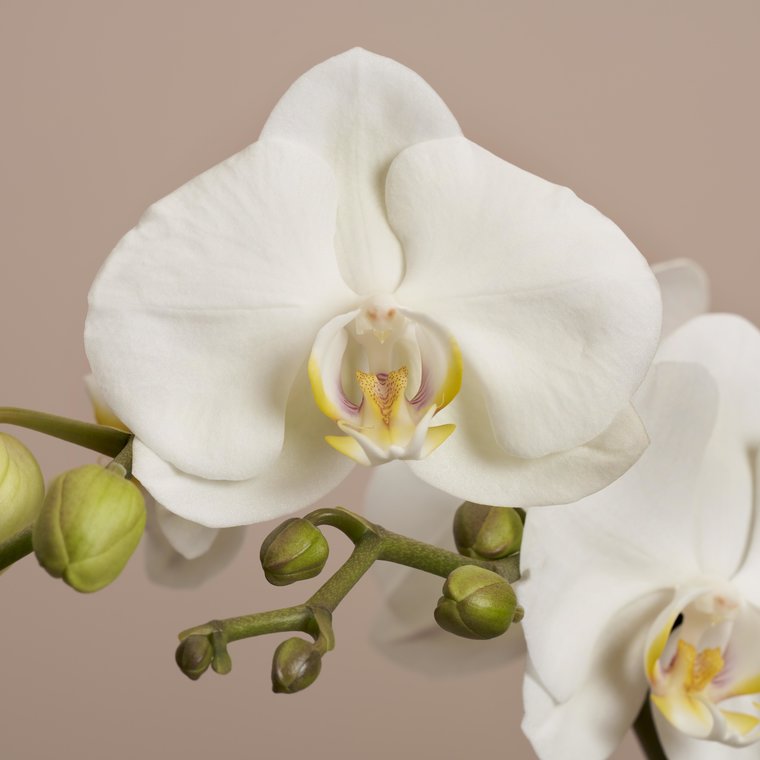
With proper care, you can enjoy the splendid flowers of your Phalaenopsis for a long time, over 3 months. And did you know that when your Phalaenopsis has stopped flowering, it can be encouraged to flower again after a break of 6 months to recover? We have put together a number of tips to help you enjoy your flowering Phalaenopsis for as long as possible. These tips will also tell you how to stimulate your orchid to flower several times.
Temperature and light
Phalaenopsis grows best at a minimum night temperature of 16°C and a maximum day temperature of 24°C. The ideal day temperature lies between 20 and 22°C. This orchid requires a lot of light but does not tolerate direct sunlight, and certainly not in the summer months. An ideal spot is on a north- or northeast-facing or south- or southeast-facing windowsill. Leaves turning yellow can be a sign of too much direct sunlight. If buds fall off or the leaves turn dark green, the plant may not be getting enough light.
Water and humidity
Water the soil in the pot rather than directly on the plant. Rainwater is better than tap water containing a lot of calcium. It is preferable to water early in the day. It is even better to soak the pot in a bucket of water for 5 to 10 minutes. Then your orchid can go without water for the next 7 days. In its natural habitat, Phalaenopsis is exposed to high humidity. So if you want to cultivate or propagate the plant, it is best to choose a humid location, like the kitchen, bathroom or conservatory.
Soil and fertiliser
It is important for Phalaenopsis to be rooted in well-ventilated soil that allows moisture-retaining drainage. Special orchid potting soil is available at most garden centres and is ideal for this purpose. It is better than using normal potting soil. Because the well-ventilated orchid potting soil does not contain much plant food, it is best to add liquid fertiliser to the water for Phalaenopsis. Special orchid fertiliser is available and should be applied twice a month from March through October.
After flowering is finished
Once a Phalaenopsis has finished flowering, you can encourage it to flower again by cutting off the spike above the second 'eye'. By 'eye' we mean the thickened node on the spike. Start counting from the bottom. If the Phalaenopsis produces air roots that grow outside the pot, this is a sign that the orchid is healthy. Just leave the roots alone. You don't have to push them back in the pot. You may even damage them by doing so.